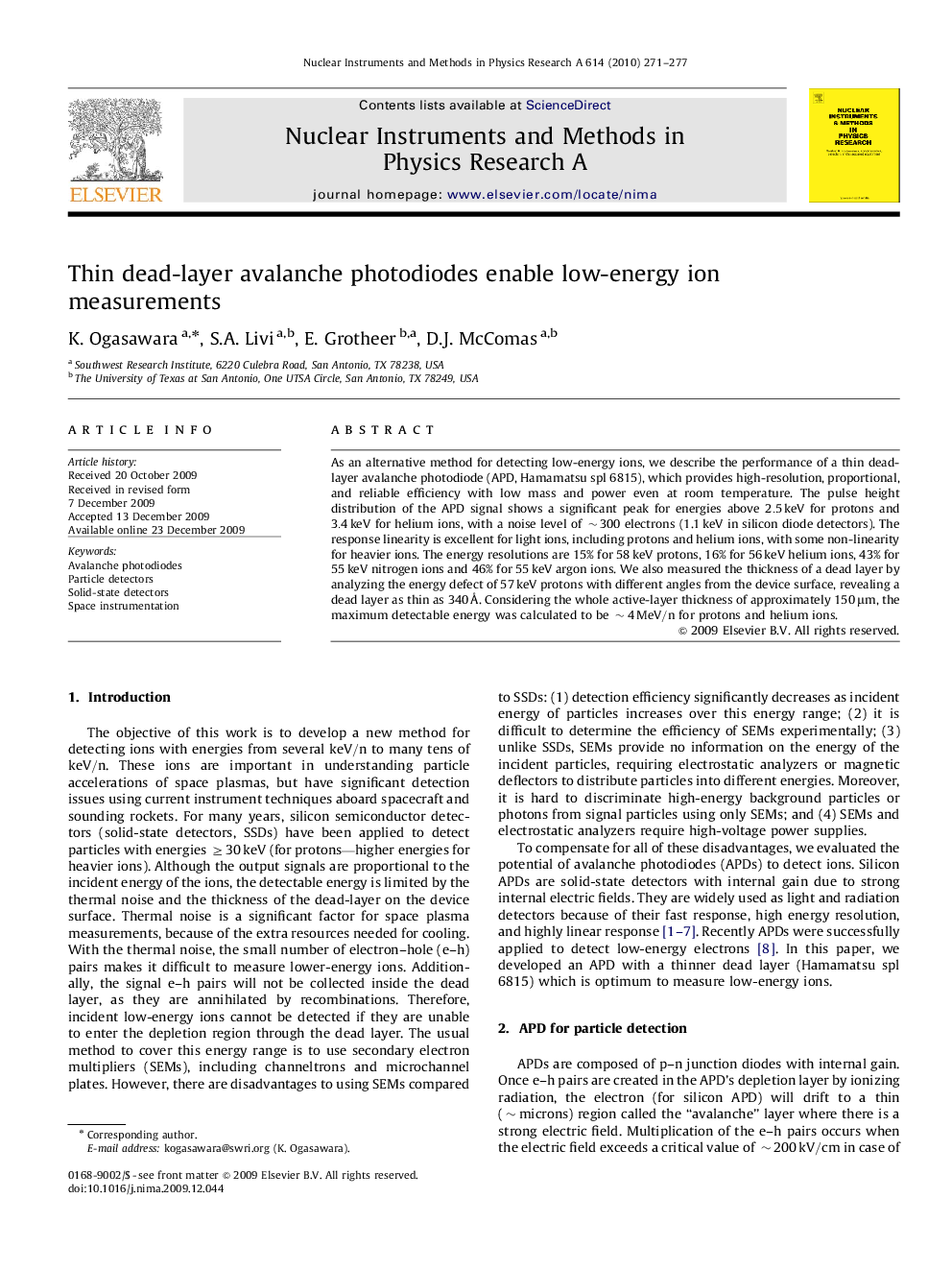| Article ID | Journal | Published Year | Pages | File Type |
|---|---|---|---|---|
| 1826772 | Nuclear Instruments and Methods in Physics Research Section A: Accelerators, Spectrometers, Detectors and Associated Equipment | 2010 | 7 Pages |
As an alternative method for detecting low-energy ions, we describe the performance of a thin dead-layer avalanche photodiode (APD, Hamamatsu spl 6815), which provides high-resolution, proportional, and reliable efficiency with low mass and power even at room temperature. The pulse height distribution of the APD signal shows a significant peak for energies above 2.5keV for protons and 3.4keV for helium ions, with a noise level of ∼300∼300 electrons (1.1 keV in silicon diode detectors). The response linearity is excellent for light ions, including protons and helium ions, with some non-linearity for heavier ions. The energy resolutions are 15% for 58 keV protons, 16% for 56 keV helium ions, 43% for 55 keV nitrogen ions and 46% for 55 keV argon ions. We also measured the thickness of a dead layer by analyzing the energy defect of 57 keV protons with different angles from the device surface, revealing a dead layer as thin as 340 Å. Considering the whole active-layer thickness of approximately 150μm, the maximum detectable energy was calculated to be ∼4MeV/n for protons and helium ions.
